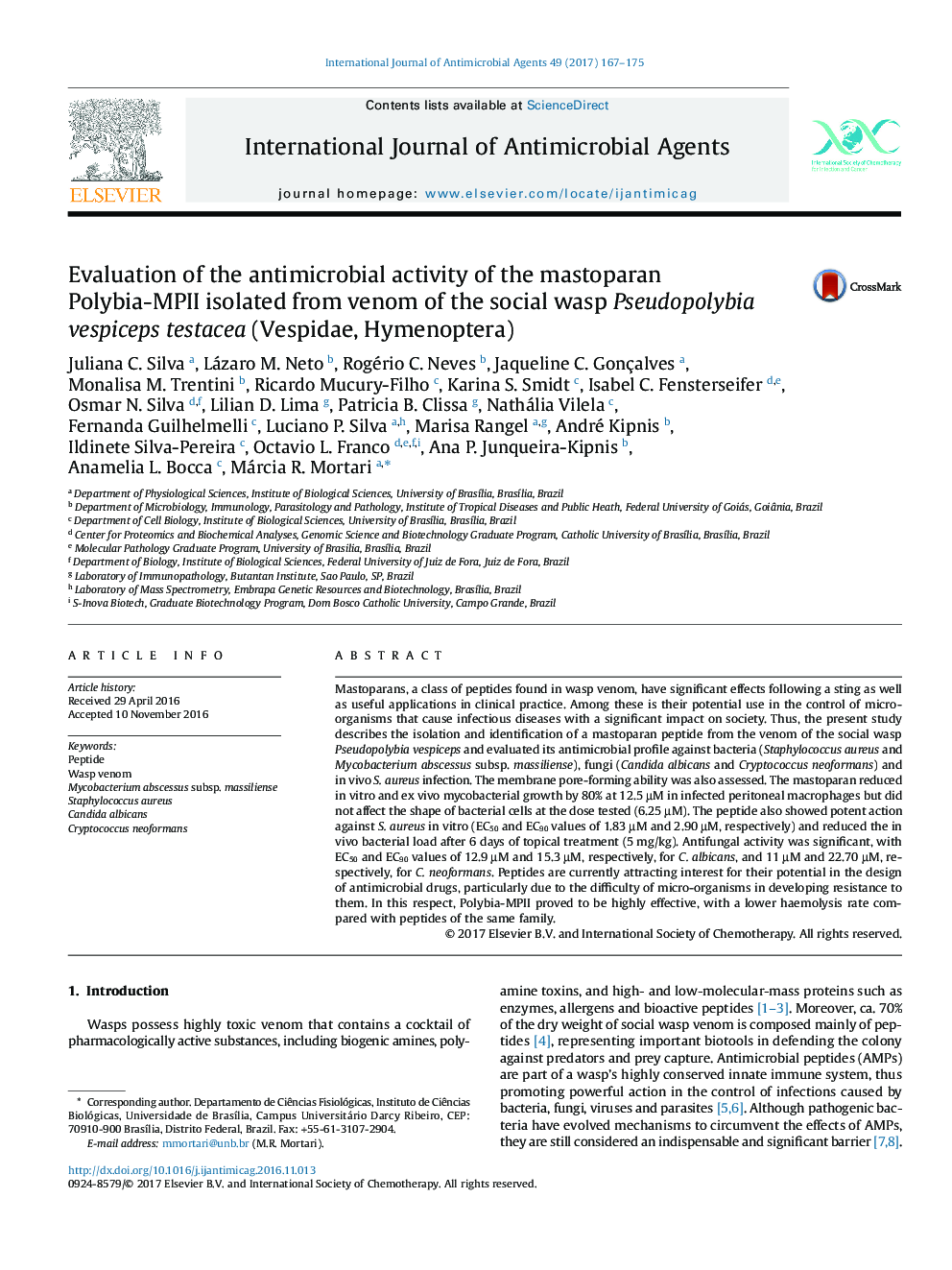| کد مقاله | کد نشریه | سال انتشار | مقاله انگلیسی | نسخه تمام متن |
|---|---|---|---|---|
| 5666968 | 1591746 | 2017 | 9 صفحه PDF | دانلود رایگان |

- Polybia-MPII demonstrated potent activity against Staphylococcus aureus.
- Topical application of Polybia-MPII reduced the number of S. aureus in wounds.
- Polybia-MPII inhibited the growth of two medically important fungal pathogens.
- Polybia-MPII has potential to inhibit mycobacteria and to kill intracytoplasmic bacteria.
- The peptide presented lytic pore-forming activity on planar lipid bilayers.
Mastoparans, a class of peptides found in wasp venom, have significant effects following a sting as well as useful applications in clinical practice. Among these is their potential use in the control of micro-organisms that cause infectious diseases with a significant impact on society. Thus, the present study describes the isolation and identification of a mastoparan peptide from the venom of the social wasp Pseudopolybia vespiceps and evaluated its antimicrobial profile against bacteria (Staphylococcus aureus and Mycobacterium abscessus subsp. massiliense), fungi (Candida albicans and Cryptococcus neoformans) and in vivo S. aureus infection. The membrane pore-forming ability was also assessed. The mastoparan reduced in vitro and ex vivo mycobacterial growth by 80% at 12.5âµM in infected peritoneal macrophages but did not affect the shape of bacterial cells at the dose tested (6.25âµM). The peptide also showed potent action against S. aureus in vitro (EC50 and EC90 values of 1.83âµM and 2.90âµM, respectively) and reduced the in vivo bacterial load after 6 days of topical treatment (5âmg/kg). Antifungal activity was significant, with EC50 and EC90 values of 12.9âµM and 15.3âµM, respectively, for C. albicans, and 11âµM and 22.70âµM, respectively, for C. neoformans. Peptides are currently attracting interest for their potential in the design of antimicrobial drugs, particularly due to the difficulty of micro-organisms in developing resistance to them. In this respect, Polybia-MPII proved to be highly effective, with a lower haemolysis rate compared with peptides of the same family.
Journal: International Journal of Antimicrobial Agents - Volume 49, Issue 2, February 2017, Pages 167-175